I often refer to my hens as little artists, and rightfully so: eggs are amazing masterpieces that require extraordinary resources to produce. I find it positively painful to crack some of their beauties. Unfortunately, not all eggshells are of the same structural quality; many factors contribute to shell quality from ambient temperature to stress and diet and I wondered whether the source of calcium in a hen’s diet, eggshells or oyster shell, mattered at all and learned that in fact, it does.
I was surprised to learn that the size of the supplemental calcium source fed to laying hens matters. Let’s look at some of the facts about eggshell construction and dietary calcium to learn why that is the case.EGGSHELL & CALCIUM FACTS
- Of the approximately 25 hours needed to create an egg, 18-20 of
them are dedicated to shell formation. - Laying hens do most of the work of assembling eggshells overnight, which is when calcium is in highest demand. (And we thought they were just sleeping at night!)
- In the 18-20 hours needed to assemble an eggshell, a hen can use and replace the calcium it carries in its bloodstream up to 100 times.
- Eggshells are composed of 97% calcium carbonate.
- The calcium required to make eggshells must be provided in a hen’s diet while carbonate is produced within a hen’s body during the normal course of metabolism.
- Calcium carbonate must be broken down into its components (calcium + carbonate) in the hen’s intestine before the calcium is absorbed into the blood. The calcium is then either stored in the bones or routed directly to the shell gland via the bloodstream.
- The most common sources of calcium carbonate fed to laying hens are oyster shells and crushed limestone.
The storage facility for calcium in laying hens is a specialized bone called the medullary bone. Think: sponge-like bone filled with calcium inside a hard, hollow bone. (The hard bone is the cortical bone, which is responsible for strength and stability).
We can see a cortical leg bone in this photo. Medullary bones of a laying hens are inside cortical bones. Hens deprived of adequate amounts of dietary calcium will utilize the calcium stored within their cortical bones to produce eggshells, causing brittle bones that fracture easily and in the most severe cases, the inability to stand. This condition is known as caged-layer fatigue.
Larger particles of calcium carbonate take longer to digest than smaller particles.
In multiple studies, hens sought out large particles of oyster shell late in the day, prior to the most rapid period of shell formation overnight, in order to supply themselves with a continuous supply of calcium when it is most needed.
TWO TYPES OF DIETARY CALCIUM
There are two types of calcium ordinarily fed to backyard laying hens: crushed limestone, which layer feeds already contain, and oyster shell, which we ordinarily offer to them in a separate dish near their feeder. Crushed limestone can be thought of as a fast-release source of calcium because it’s small and is absorbed easily and quickly by the hen. Oyster shell is more of a slow-release source of calcium because it is large and sits in the gizzard, getting ground up a little at a time before being absorbed by the hen. A form of slow-release calcium is important because eggshells are formed at night when the hen is asleep, not consuming calcium-containing feed.
The time it takes for most food particles to pass through a chicken is very short – about 90 minutes. Bigger particles take longer to pass through a hen, which is why providing oyster shell during the day can help to provide more calcium at night. A slow-release calcium takes much longer to breakdown, supplying the hen with calcium throughout the night.
WE THOUGHT SHE WAS JUST SLEEPING AT NIGHT!
Of the approximately 25 hours needed to create an egg, 18-20 of them are dedicated to shell formation, which occurs overnight while a hen sleeps. Since hens don’t eat at night while they’re asleep, and the last feed they ate is on the droppings board within 90 minutes after lights out, where does all the calcium for eggshell formation come from? #lightbulbmoment The large particles of oyster shell in the gizzard are essential to eggshell formation overnight!
SKIP THE CRUSHED EGGSHELLS!
Before the advent of commercially available, nutritionally complete chicken feed, farmers would offer crushed eggshells to their laying hens to provide a fast-release source of calcium to laying hens to support bone strength and eggshell quality. However, because nutritionally complete chicken feeds already contain crushed limestone, a fast-release, small particle size source of calcium, eggshells are unnecessary and redundant. Crushed eggshells are neither necessary, nor helpful to laying hens as the excess calcium must be filtered out of the hen’s body, taxing her kidneys. Skip the crushed eggshells.
Questions about funky eggs? Thin shell, no shell, double yolk, no yolk, misshapen, egg within an egg? Find out how they happen HERE!
More information about feeding chickens at different ages can be found here.
Sources, citations and further reading:
Research on Eggshell Structure and Quality: An Historical Overview
The Avian Skeletal System
Factors Affecting Egg Production in Backyard Chicken Flocks.
How an Eggshell is Made
Bones, Shells & Hen Health
Calcium Requirements of Bovanse Hens
Concepts of Eggshell Quality
Overview of Bone Biology in the Egg-laying hen
*Gail Damerow, Backyard Poultry Magazine Volume 9, Number 3 June/July, 2014
Kathy Shea Mormino
Affectionately known internationally as The Chicken Chick®, Kathy Shea Mormino shares a fun-loving, informative style to raising backyard chickens. …Read on


shop my SPONSORS
I often refer to my hens as little artists, and rightfully so: eggs are amazing masterpieces that require extraordinary resources to produce. I find it positively painful to crack some of their beauties. Unfortunately, not all eggshells are of the same structural quality; many factors contribute to shell quality from ambient temperature to stress and diet and I wondered whether the source of calcium in a hen’s diet, eggshells or oyster shell, mattered at all and learned that in fact, it does.
I was surprised to learn that the size of the supplemental calcium source fed to laying hens matters. Let’s look at some of the facts about eggshell construction and dietary calcium to learn why that is the case.EGGSHELL & CALCIUM FACTS
- Of the approximately 25 hours needed to create an egg, 18-20 of
them are dedicated to shell formation. - Laying hens do most of the work of assembling eggshells overnight, which is when calcium is in highest demand. (And we thought they were just sleeping at night!)
- In the 18-20 hours needed to assemble an eggshell, a hen can use and replace the calcium it carries in its bloodstream up to 100 times.
- Eggshells are composed of 97% calcium carbonate.
- The calcium required to make eggshells must be provided in a hen’s diet while carbonate is produced within a hen’s body during the normal course of metabolism.
- Calcium carbonate must be broken down into its components (calcium + carbonate) in the hen’s intestine before the calcium is absorbed into the blood. The calcium is then either stored in the bones or routed directly to the shell gland via the bloodstream.
- The most common sources of calcium carbonate fed to laying hens are oyster shells and crushed limestone.
The storage facility for calcium in laying hens is a specialized bone called the medullary bone. Think: sponge-like bone filled with calcium inside a hard, hollow bone. (The hard bone is the cortical bone, which is responsible for strength and stability).
We can see a cortical leg bone in this photo. Medullary bones of a laying hens are inside cortical bones. Hens deprived of adequate amounts of dietary calcium will utilize the calcium stored within their cortical bones to produce eggshells, causing brittle bones that fracture easily and in the most severe cases, the inability to stand. This condition is known as caged-layer fatigue.
Larger particles of calcium carbonate take longer to digest than smaller particles.
In multiple studies, hens sought out large particles of oyster shell late in the day, prior to the most rapid period of shell formation overnight, in order to supply themselves with a continuous supply of calcium when it is most needed.
TWO TYPES OF DIETARY CALCIUM
There are two types of calcium ordinarily fed to backyard laying hens: crushed limestone, which layer feeds already contain, and oyster shell, which we ordinarily offer to them in a separate dish near their feeder. Crushed limestone can be thought of as a fast-release source of calcium because it’s small and is absorbed easily and quickly by the hen. Oyster shell is more of a slow-release source of calcium because it is large and sits in the gizzard, getting ground up a little at a time before being absorbed by the hen. A form of slow-release calcium is important because eggshells are formed at night when the hen is asleep, not consuming calcium-containing feed.
The time it takes for most food particles to pass through a chicken is very short – about 90 minutes. Bigger particles take longer to pass through a hen, which is why providing oyster shell during the day can help to provide more calcium at night. A slow-release calcium takes much longer to breakdown, supplying the hen with calcium throughout the night.
WE THOUGHT SHE WAS JUST SLEEPING AT NIGHT!
Of the approximately 25 hours needed to create an egg, 18-20 of them are dedicated to shell formation, which occurs overnight while a hen sleeps. Since hens don’t eat at night while they’re asleep, and the last feed they ate is on the droppings board within 90 minutes after lights out, where does all the calcium for eggshell formation come from? #lightbulbmoment The large particles of oyster shell in the gizzard are essential to eggshell formation overnight!
SKIP THE CRUSHED EGGSHELLS!
Before the advent of commercially available, nutritionally complete chicken feed, farmers would offer crushed eggshells to their laying hens to provide a fast-release source of calcium to laying hens to support bone strength and eggshell quality. However, because nutritionally complete chicken feeds already contain crushed limestone, a fast-release, small particle size source of calcium, eggshells are unnecessary and redundant. Crushed eggshells are neither necessary, nor helpful to laying hens as the excess calcium must be filtered out of the hen’s body, taxing her kidneys. Skip the crushed eggshells.
Questions about funky eggs? Thin shell, no shell, double yolk, no yolk, misshapen, egg within an egg? Find out how they happen HERE!
More information about feeding chickens at different ages can be found here.
Sources, citations and further reading:
Research on Eggshell Structure and Quality: An Historical Overview
The Avian Skeletal System
Factors Affecting Egg Production in Backyard Chicken Flocks.
How an Eggshell is Made
Bones, Shells & Hen Health
Calcium Requirements of Bovanse Hens
Concepts of Eggshell Quality
Overview of Bone Biology in the Egg-laying hen
*Gail Damerow, Backyard Poultry Magazine Volume 9, Number 3 June/July, 2014



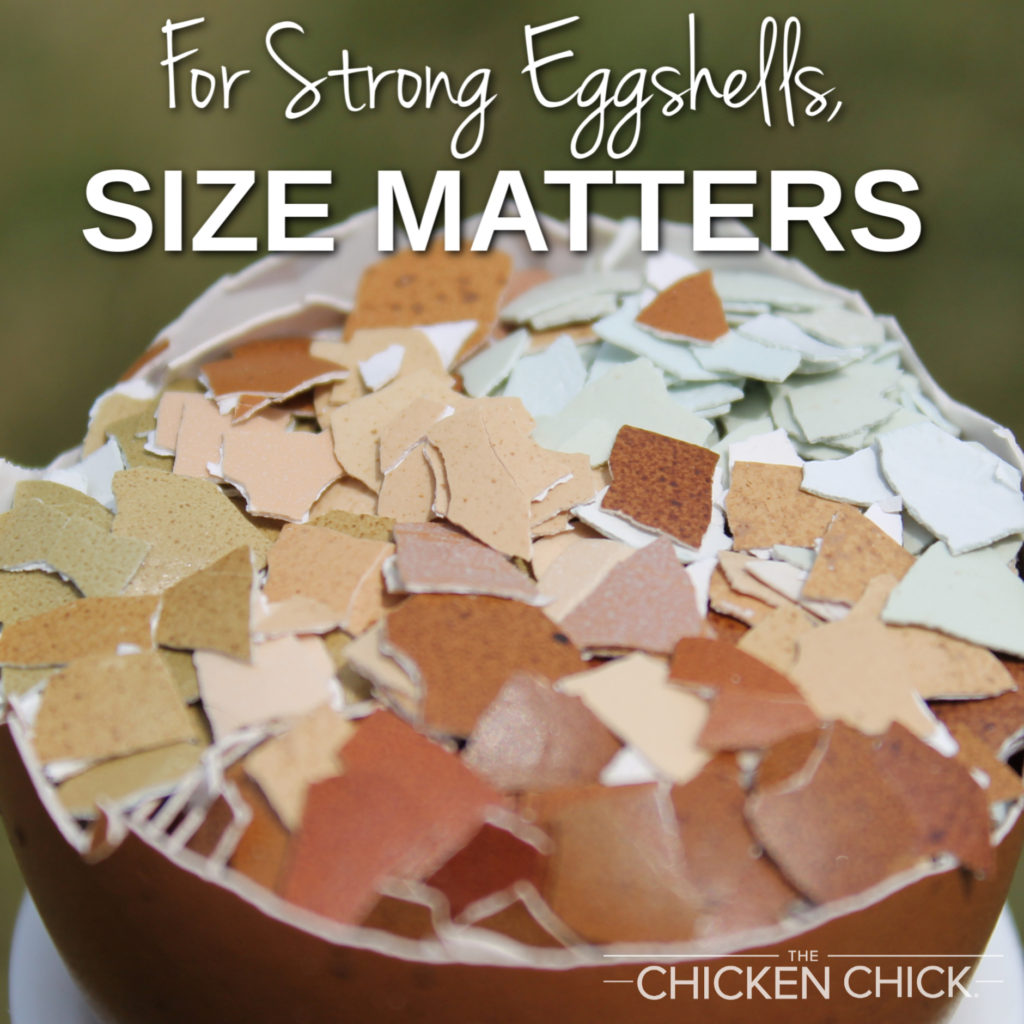
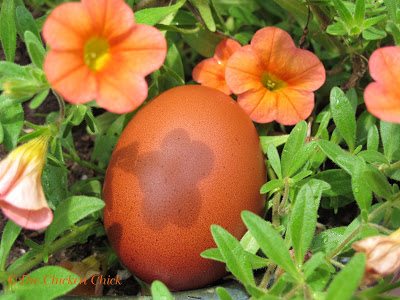

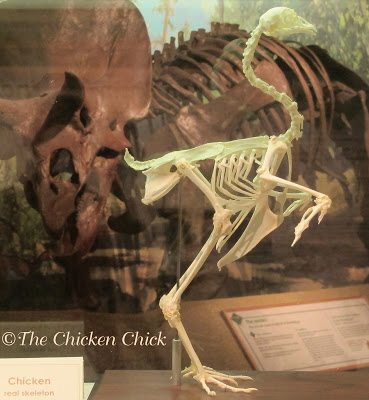
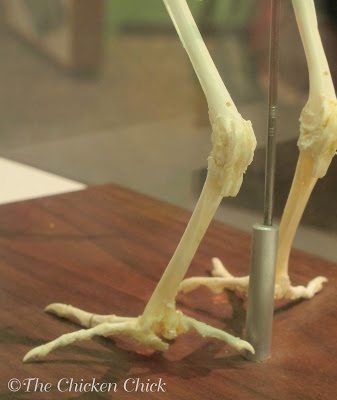
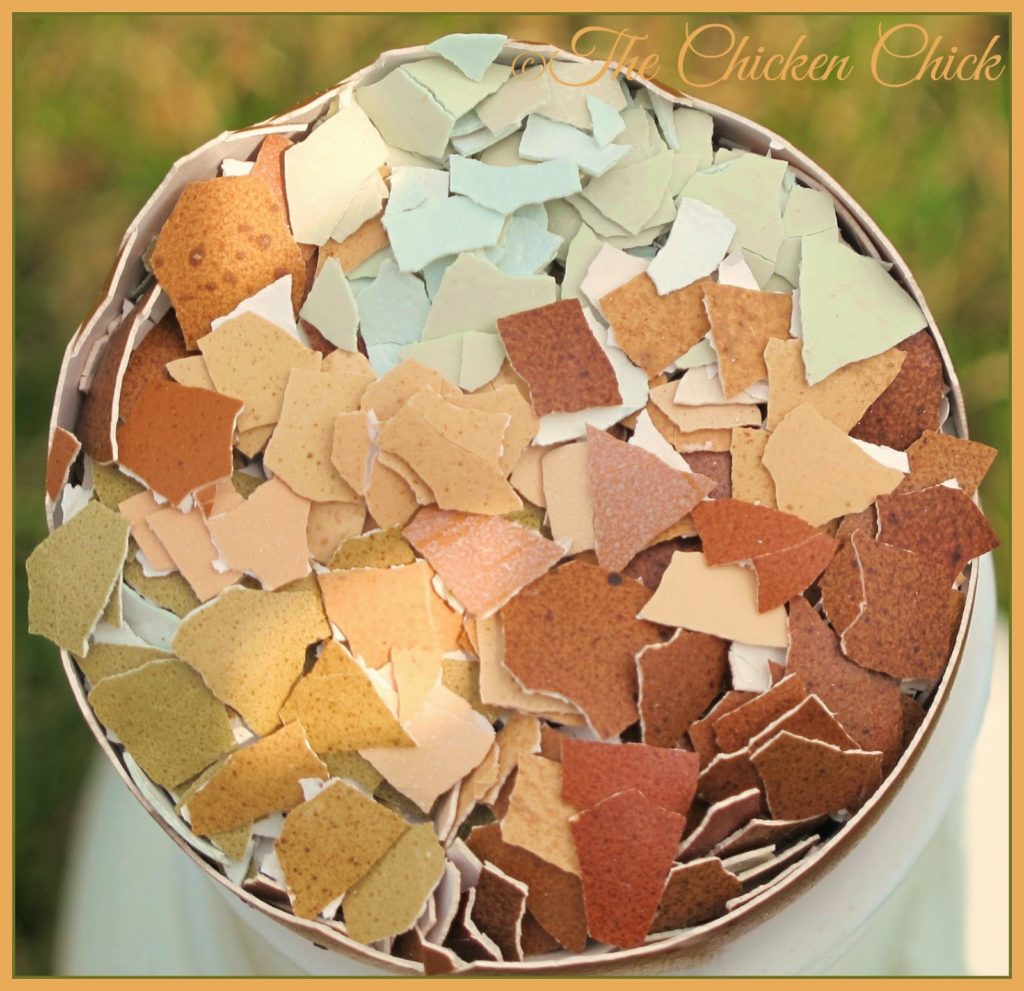
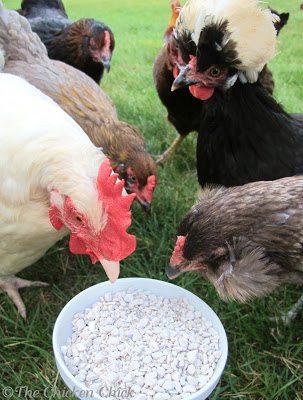
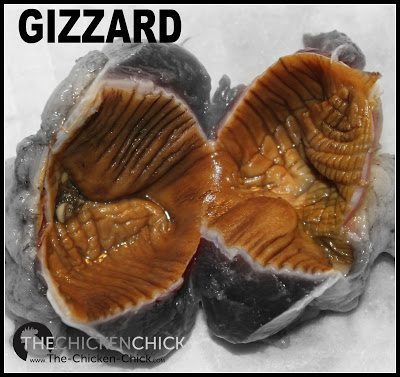
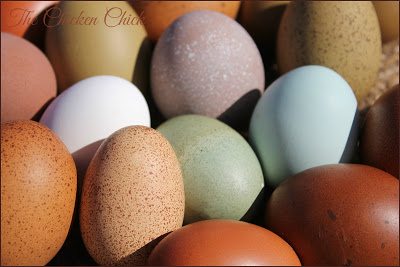

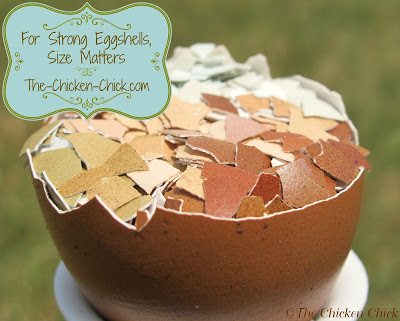






















OK…I have a chicken that is a picky eater. She won't even touch meal worms, and has laid three hard shelled eggs, but only after I gave her egg shells. Most nights she lays soft shelled eggs from her roost. Sometimes two a night. She will not eat the oyster shells at all, and now does not like the egg shells. Any suggestions? My other hens have no problem producing amazing large hard shelled eggs. Help!
Krystal, the eggshells should never be added into the feed. Put them in a separate dish, apart from the pellets so that the hens that need more calcium than is already in the layer feed can take it and the hens that do not require as much calcium do not get more than they need.
My girls are still too young to lay but they should start late next month. I've been giving them crushed egg shell in their pellets along with their grit. Sometimes I make a mash out of yogurt, pellets and flax seed to give them more calcium. I hope I'm doing right by my girls they seem happy and healthy.
Chicken Health for this dummie please :)
I have raised chickens for years but I am always open to learning new things